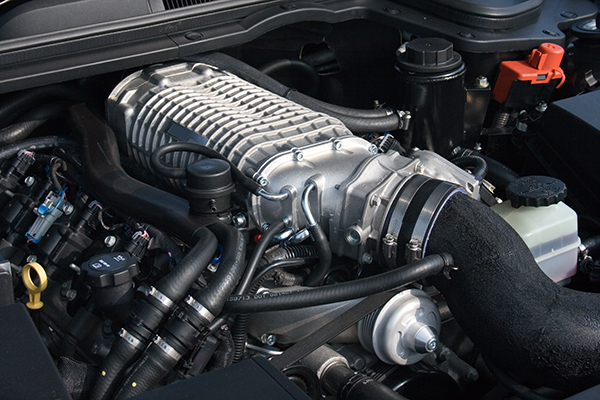
In the world of high-performance cars, two components stand out: the supercharger and turbocharger. They provide the power needed for quick acceleration and increased horsepower, while still keeping the engine pretty fuel efficient. But what makes them different from each other - aren't they the same?
Turbochargers - More Power, More Sound
By utilizing the exhaust gasses emitted by your car's engine, a device can be created to generate additional power with great efficiency. That's exactly what a turbocharger does. It's like recycling on steroids! Here's how it works:
When you hit the gas pedal, your engine burns fuel and produces exhaust gasses. Then they flow into the turbocharger, where a fan-like turbine spins as they rush past. This turbine is connected to a compressor on the other end, which forces extra air into the engine's intake manifold. More air means more fuel can be burned, resulting in a significant power boost.
Turbochargers are like the silent ninjas of power delivery - that being true if you stay under 3500-4000 RPMs; after that, they tend to make a low whining sound. They don't take power directly from the engine, making them more fuel-efficient when not under heavy load. However, there is a downside: turbo lag. It's the brief delay between pressing the pedal and feeling the surge of power - to be more specific, most turbos start to activate at around 2100 RPMs. But modern technology has greatly reduced this lag, making turbos more popular than ever.
Superchargers - High RPM Power
Now, let's shift our attention to superchargers, the "instant gratification" option for power-hungry drivers. Superchargers are mechanically driven by a belt connected to the engine's crankshaft. This direct mechanical connection ensures instant power delivery. No waiting, no lag, just pure, unadulterated thrust.
When the engine spins, the supercharger's compressor spins too, drawing in air and forcing it into the engine's intake. This immediate boost in air pressure means more oxygen for combustion, leading to a swift surge in power. If you love the exhilarating sensation of being pushed back into your seat when you stomp on the gas, a supercharger is your best friend.
-You might have seen or heard a turbocharger in one of America's greatest cars, the Dodge Challenger Hellcat!
However, there's a trade-off. Superchargers do consume some engine power to operate, which can result in slightly lower fuel efficiency compared to turbos when cruising at constant speeds.
The Verdict: Turbo vs. Super
In the battle of turbocharger vs. supercharger, there's no clear winner - it all depends on what you are looking for. It all comes down to your driving preferences and the specific application you will need the car for.
Choose a Turbocharger If:
- You want improved fuel efficiency during everyday driving.
- You're okay with a slight delay in power delivery (turbo lag).
- You're a fan of smaller engines with big power potential.
Go for a Supercharger If:
- You crave instant power without any lag.
- You don't mind sacrificing a bit of fuel efficiency for exhilarating acceleration.
- You prefer the mechanical whine that superchargers often produce.
Turbo and Supercharger Repairs and Maintenance!
If you are looking for a shop for your maintenance and repair procedures, make sure to check out Auto Pro! We are more than ready to handle any car-related problem - contact us, and we will be happy to answer!